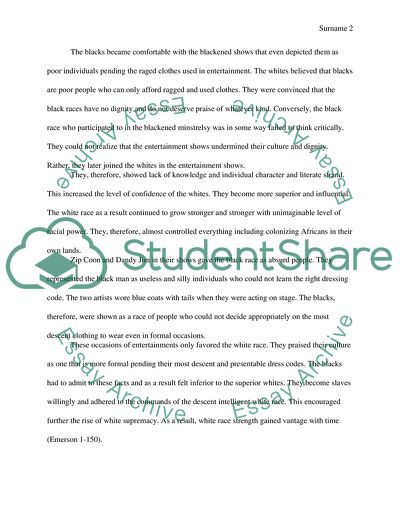Cite this document
(Antebellum Minstrelsy and Racial Supremacy Assignment Example | Topics and Well Written Essays - 1750 words, n.d.)
Antebellum Minstrelsy and Racial Supremacy Assignment Example | Topics and Well Written Essays - 1750 words. https://studentshare.org/history/1821510-minstrelsy-and-slave-culture
Antebellum Minstrelsy and Racial Supremacy Assignment Example | Topics and Well Written Essays - 1750 words. https://studentshare.org/history/1821510-minstrelsy-and-slave-culture
(Antebellum Minstrelsy and Racial Supremacy Assignment Example | Topics and Well Written Essays - 1750 Words)
Antebellum Minstrelsy and Racial Supremacy Assignment Example | Topics and Well Written Essays - 1750 Words. https://studentshare.org/history/1821510-minstrelsy-and-slave-culture.
Antebellum Minstrelsy and Racial Supremacy Assignment Example | Topics and Well Written Essays - 1750 Words. https://studentshare.org/history/1821510-minstrelsy-and-slave-culture.
“Antebellum Minstrelsy and Racial Supremacy Assignment Example | Topics and Well Written Essays - 1750 Words”. https://studentshare.org/history/1821510-minstrelsy-and-slave-culture.


